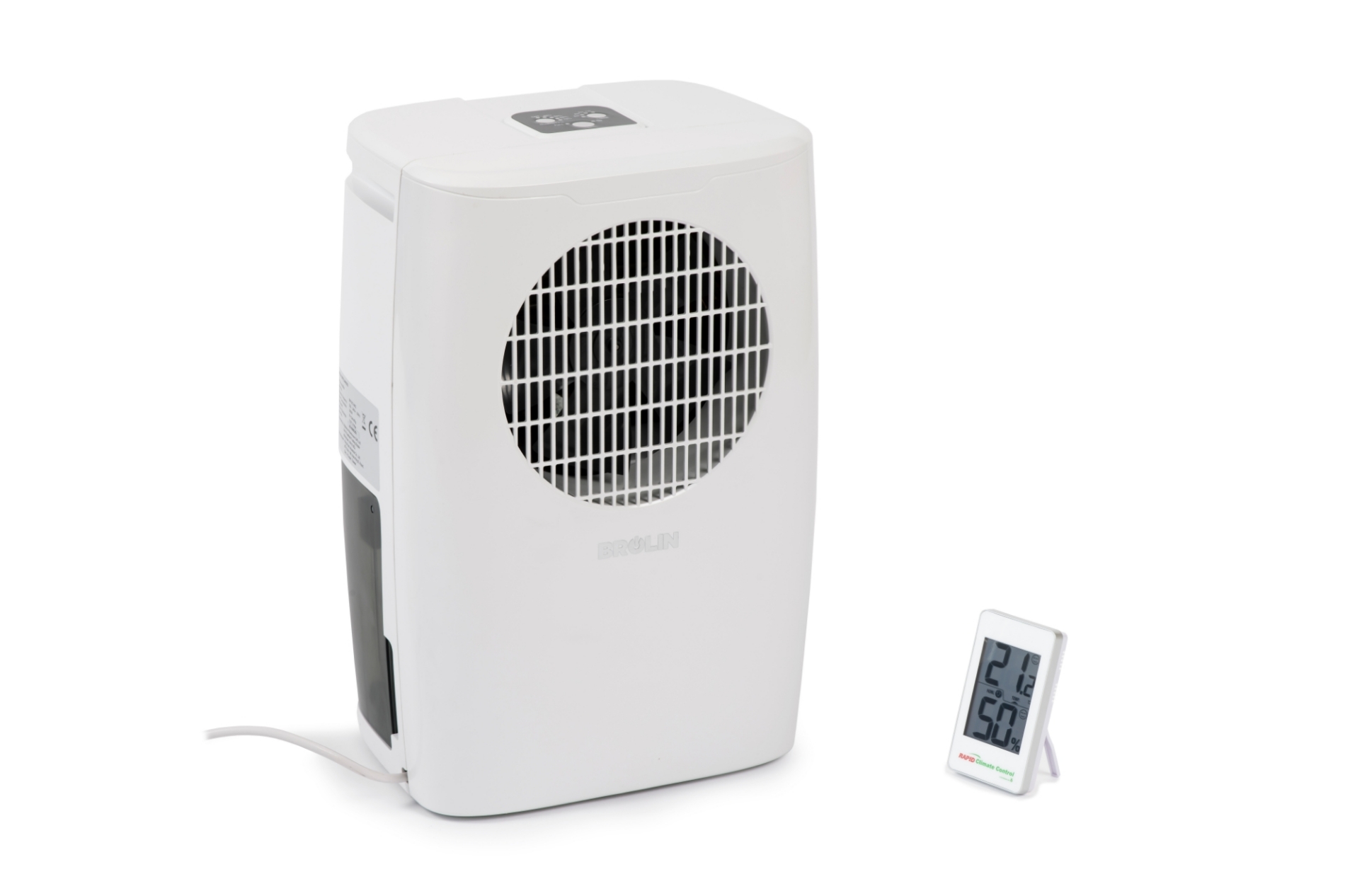
Guide to Caravan and Motorhome Dehumidifiers
If you are a caravan or motorhome owner, you may find signs of damp and mould when you return to your caravan or motorhome after the winter period.
Even after taking the usual precautions such as drain downs and opening bathroom doors, fridges and cupboards, mould can still prove a real problem as it loves the moist, stale air found inside caravans or motorhomes that have been shut up for the winter.
Good ventilation is key to prevent air going stale, but moisture can need some extra help to keep it at bay. As an example, on a damp day the air entering the caravan or motorhome through the ventilators will be moist and this will condense on cool surfaces.
Keeping the Interior Dry
Damp caravans and motorhomes can dry out in time, but it is recommended to speed up the process with a mains-powered dehumidifier, as high humidity often causes mould growth. A dehumidifier will keep the interior dry and prevent the growth of mould.
There are two types of dehumidifier available - compressor dehumidifiers and those that use a desiccant to dry the air. When choosing a dehumidifier, it is important to choose a machine that has the extraction capacity to cope with the air volume within the caravan or motorhome. Even more importantly, the dehumidifier must also be able to work at low temperatures.
Desiccant Dehumidifiers
In caravans and motorhomes, we recommend using desiccant dehumidifiers as they work well at the low temperatures we typically get in the UK over winter. Desiccant dehumidifiers are also small, light, portable and quiet.
Desiccant dehumidifiers use a desiccant material, typically zeolite, which absorbs moisture from the air. This desiccant material works in much the same way as silica gel packets which are used to absorb moisture and keep things dry, such as shoes and handbags, to protect them from dampness.
Compressor Dehumidifiers vs Desiccant Dehumidifiers
Compressor dehumidifiers work best at higher temperatures and in humid conditions, and are rated at a temperature of 30°C and a relative humidity of 80%. Parts of a compressor dehumidifier can actually ice up if the temperature drops too low. Different models have different ways of dealing with this; they either switch off, or they can have a reverse hot gas cycle which quickly heats up the frozen evaporator plates and melts the ice.
Compressor dehumidifiers do warm up the air slightly but desiccant models provide far greater warmth. This is obviously advantageous for a caravan or motorhome in winter, helping reduce the chill and the likelihood of parts freezing up.
Auto Restart and Continuous Drain Off
Other key features to look out for on dehumidifiers that are being left to run unattended in a remote location for long periods of time are an auto restart and continuous drain off facility.
Auto restart means that after a power failure or power cut the unit will start back up automatically and continue to run at the same setting it was running at prior to the cut in power, rather than going into standby and having to be manually reset. It also means that the unit can be left running on a plug timer if required. This can be useful as it provides even greater flexibility of use than just the built-in timer and variable humidity level that can be adjusted by the humidistat.
Continuous drain off means that rather than just collecting the extracted moisture in a holding tank, there is the option to drain off the moisture through a small hose which can be fed into a sink, drain point or separate holding tank.
At Sunbelt Rentals, we offer a wide range of desiccant dehumidifiers which are ideal for use in caravans and motorhomes. Get in touch with our experts if you need further advice about the best models to suit you.

